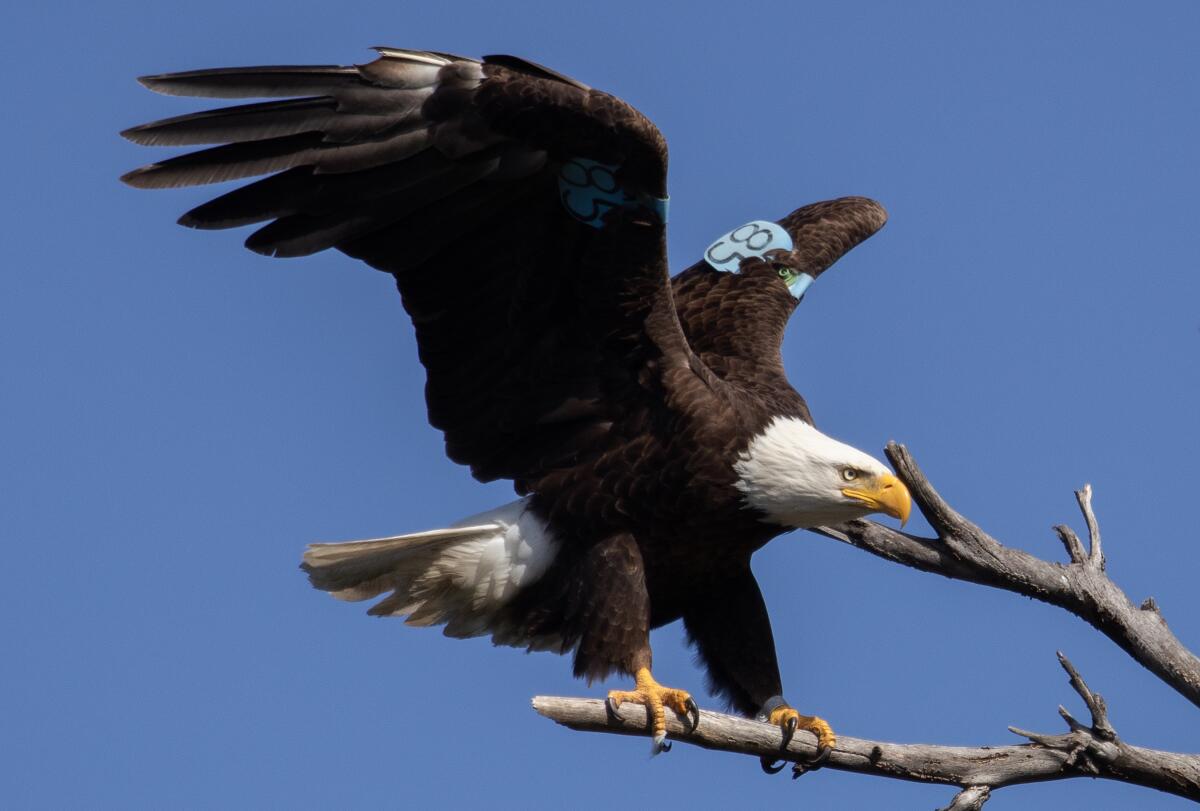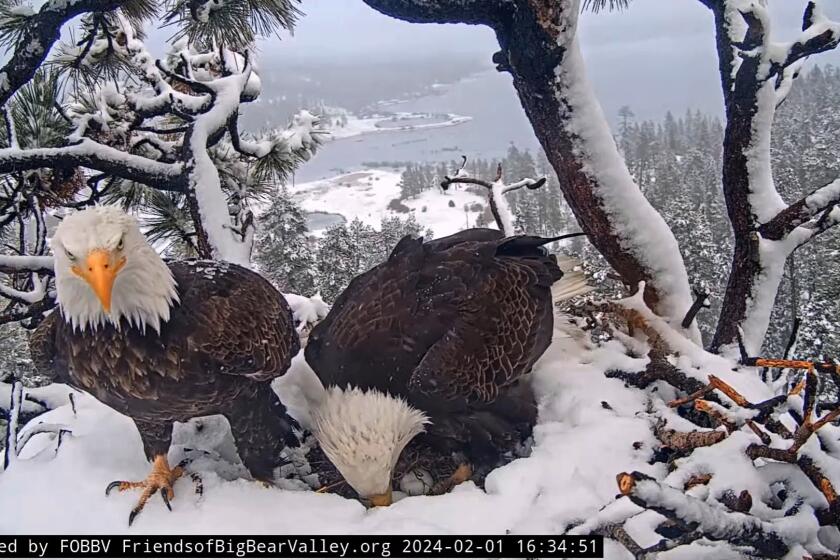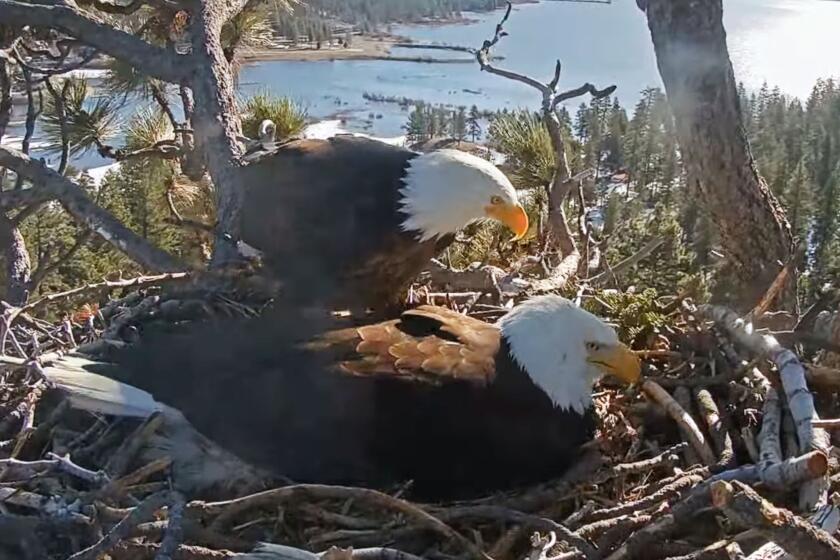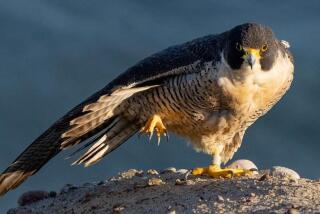Sorrow for Jackie and Shadow, but two new baby eagles in Orange County

Southern California bird watchers saw a new and yet familiar sight in Orange County earlier this month.
The female bald eagle known as La’i was spotted near the Santa Ana River nesting with an adult companion and two eaglets, according to Peter Sharpe, the acting director for the Institute for Wildlife Studies’ Bald Eagle and Peregrine Falcon Restoration Project.
The eaglets are an uplifting sight as news has proliferated of Big Bear bald eagles Jackie and Shadow and their trio of eggs, which are now considered very unlikely to hatch.
“Southern California can be a pretty hard place to raise eaglets because of the environment and potential threats,” Sharpe said, “so the success that [La’i is] having is impressive.”
Sharpe said La’i’s first breeding took place in 2018. Then she hatched two chicks and followed that with two more in 2019.
“I believe she’s had more, but honestly, I’ve lost track,” Sharpe said.
It’s hard to say why La’i’s eggs produced chicks while Jackie’s did not. Biologist Sandy Steers recently told The Times that the Big Bear bald eagle couple battled cold temperatures with winter’s severe mountain snowstorms, as well as high altitude, which means less oxygen for developing chicks. But, she said, “there are all sorts of reasons.”
Jackie and Shadow have drawn record viewership recently to their live webcam. But some fans are in mourning as it has become clear the eggs are not viable.
Only about 50% of bald eagle eggs hatch. And once hatched, they face other threats. Sharpe said two of the biggest are lead poisoning and car accidents.
Bald eagles are largely scavengers in their first year. They can eat animals that died of lead poisoning and then succumb to the same fate, according to Sharpe. He said the scavenging eagles are occasionally hit by cars as they’re feasting on a carcass.
La’i chose the Santa Ana River as her habitat because of the abundance of fish and other prey, such as ducks, geese and seagulls, Sharpe said.
Sharpe noted that La’i was naturally hatched on Santa Rosa Island in 2013 and was banded, or tagged, as a nestling that year.
That tagging system has allowed observers to spot her throughout the years.
The most recent sighting of La’i and two eaglets was first reported by the Orange County Register.
Bald eagles have been known to live as long as 40 years in the wild. And Sharpe noted that they may breed for 20 to 25 years. They may produce, on average, two eaglets per year.
Fans who track the lives of the Big Bear bald eagles Jackie and Shadow via a 24-hour live webcam are now maintaining a vigil known as pip watch.
Sharpe said he was pleased to see the number of bald eagles rising in Southern California.
He estimates there are 10 to 15 pairs in the Channel Islands, about 10 pairs on Santa Cruz Island and eight on Santa Catalina Island.
Bald eagles were mainstays in Southern California for centuries until their populations disappeared from the mainland in the 1930s because of harassment and encroaching development, according to the Institute for Wildlife Studies.
The birds remained on the Channel Islands for 30 more years, but no nesting was recorded.
Sharpe and the institute believe the industrial pesticide DDT curtailed breeding on the island.
DDT was eventually banned in the U.S. in 1972, and its removal led to the return of native species around the nation, including pelicans and cormorants.
In 1980, the institute and the U.S. Fish and Wildlife Service began to reintroduce bald eagles to Catalina Island. Since 1989, 38 chicks have been successfully fostered into island nests and 21 eaglets have been born, according to the institute.
More to Read
Sign up for Essential California
The most important California stories and recommendations in your inbox every morning.
You may occasionally receive promotional content from the Los Angeles Times.













